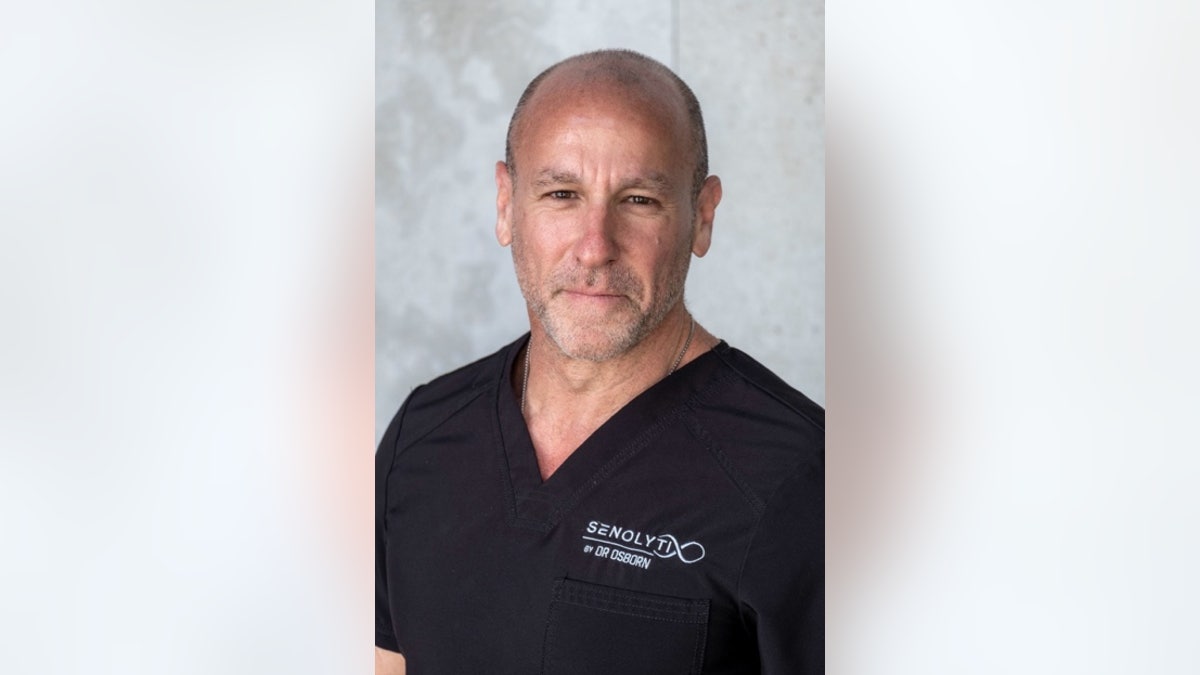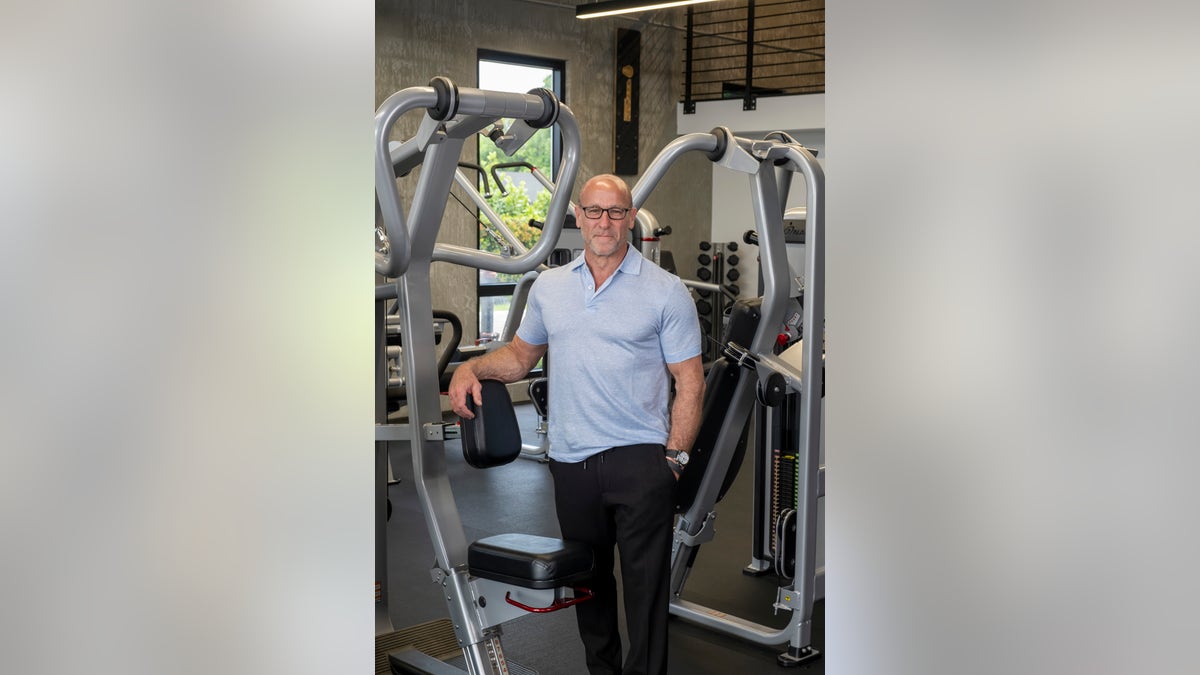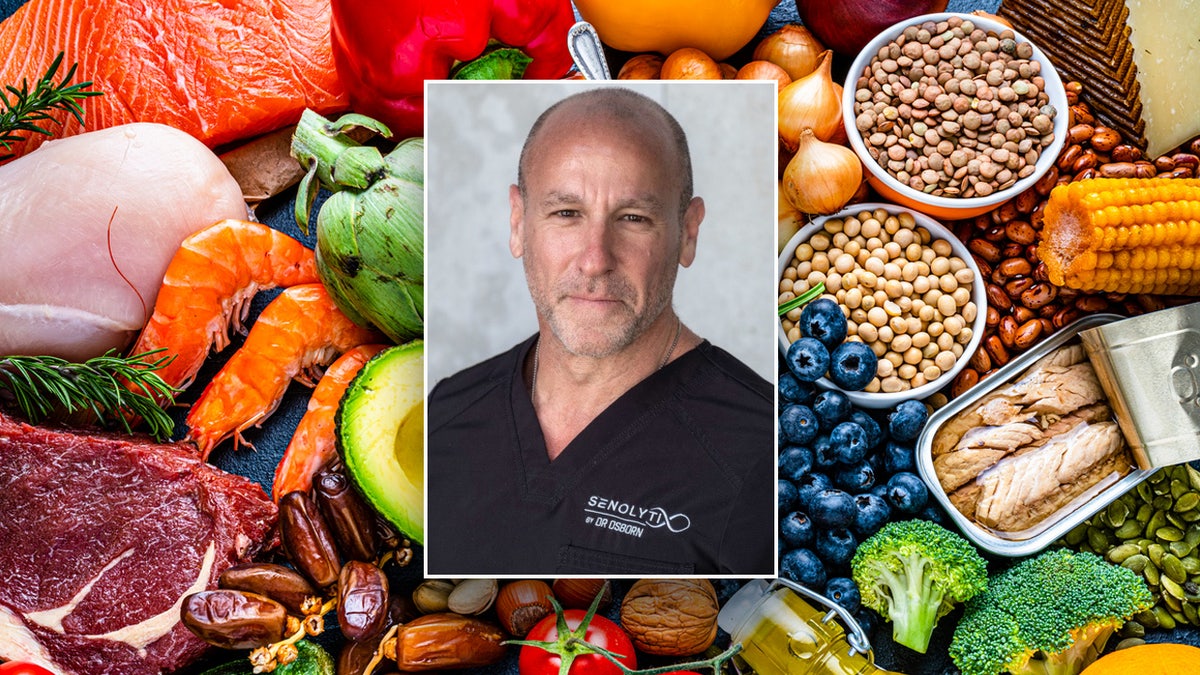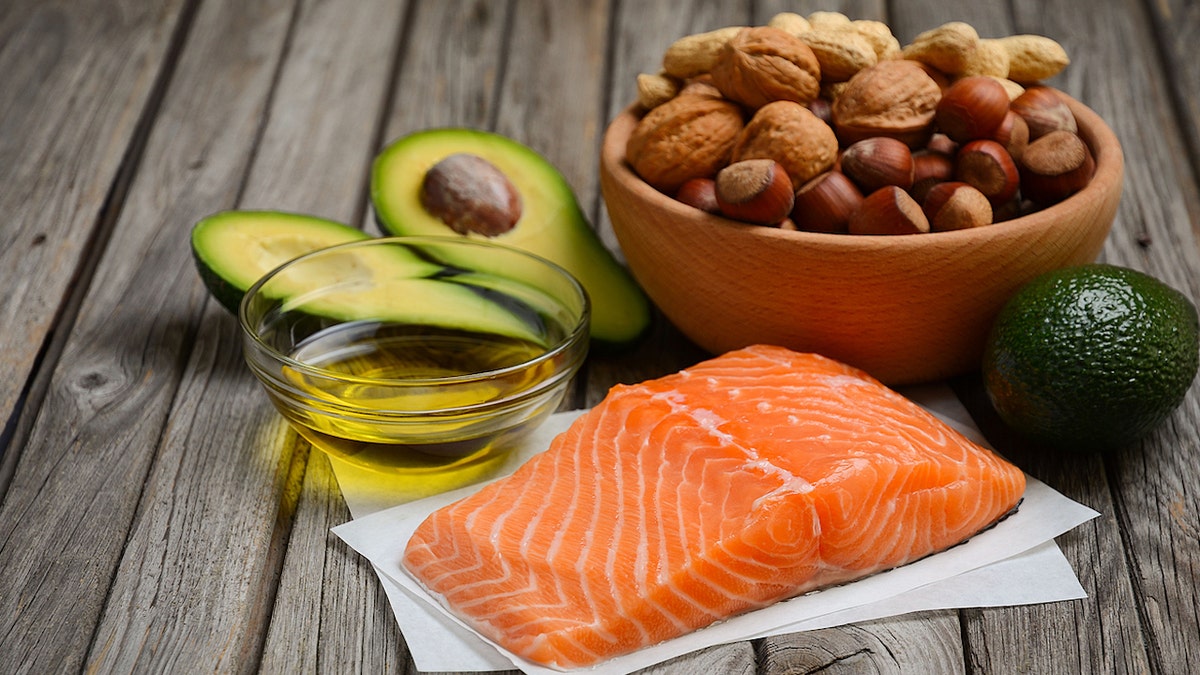4 minutes of intense activity can slash cancer risk among ‘non-exercisers’: Study
TrampoLEAN founder Louis Coraggio hosts a quick, intense trampoline workout on ‘Fox & Friends.’
One out of every three American adults — or about 36% of the country’s population — is living with obesity, which puts people at an increased risk for other diseases, according to the Centers for Disease Control and Prevention (CDC).
Over the past 20 years, heart deaths linked to obesity have tripled, a new study published in the Journal of the American Heart Association has found.
Dr. Brett Osborn, a board-certified neurosurgeon in West Palm Beach, Florida, believes it does not have to be this way.
THESE 10 NUTRITION MISTAKES COULD BE TAKING YEARS OFF YOUR LIFE: HERE'S WHAT TO DO INSTEAD
"You have ample opportunity to build a better body and prevent not only obesity, but also its downstream counterparts such as type II diabetes, coronary artery disease, cancer and even Alzheimer’s disease," the doctor told Fox News Digital in an interview.
Building a better body is more straightforward than many people realize, said Osborn, who is also founder of a preventative health care and anti-aging facility, Senolytix.

Dr. Osborn of West Palm Beach, Florida, shared five smart tips for building a better body — and the first tip focuses on a commitment to make healthy changes. (iStock/Brett Osborn)
"It’s not rocket science — or brain surgery," he said.
"It’s simply a matter of rewiring your physiology to burn fat while concomitantly maintaining, or even building, muscle."
Osborn shared with Fox News Digital his five top tips for building a better body.
Step 1: Make a commitment to change
For those who need to achieve a healthier weight, Osborn recommended setting a goal of losing 8 to 12 pounds of fat — while maintaining muscle — in the next eight weeks.
5 HEALTHY HABITS MAY BE THE SECRET TO LIVING LONGER, FLORIDA NEUROSURGEON REVEALS
"Males should strive for 1.5 pounds of fat loss per week, while females should strive for 1 pound per week," he said.
For the most accurate results, Osborn recommended using an anthropometry scale — which measures human body dimensions — to track your progress.)
To help maintain accountability, he also suggested teaming up with a friend or family member when pursuing this goal.

Dr. Brett Osborn, a board-certified neurosurgeon in West Palm Beach, Florida, also runs a longevity center. "Don’t allow any cheat days," he said when forming new habits, "whether it’s related to exercise or nutrition." (Dr. Brett Osborn)
"Habits will be formed during this period, so don’t allow any cheat days, whether it’s related to exercise or nutrition," Osborn said.
"Be relentless and remember to celebrate the accomplishment of your goal."
As with the formation of any new habit, there will be a period during which your brain "revolts" against the changes, he pointed out — "but this is normal."
ASK AN EXPERT: 'SHOULD I EXERCISE DURING MY CANCER TREATMENT?'
"Seeing yourself through the discomfort is what forms the habit," he said.
"Remember, your body is an adaptive organism. Show it a novel stimulus — whether it’s a low-carbohydrate nutrition regimen or exercise — and it may be uncomfortable, but it will adapt."
Step 2: Prioritize strength training
The acquisition of muscle will not only make you shapelier — it will also increase your basal metabolic rate, improve glycemic (blood sugar) control and enhance fat burning, Osborn said.
"If you want to burn fat off your waistline, strength train — and skip the walking on the treadmill," he advised. "Walking does not supplant strength training. It is an activity."
For females who are worried about "bulking up" through strength training, Obsorn said that is a common misperception.

The acquisition of muscle will not only improve your body's shape but will also increase your basal metabolic rate, improve glycemic (blood sugar) control and enhance fat burning, Dr. Osborn said. (Dr. Brett Osborn)
"Stick to the basic, compound movements that have made men and women strong for eons," he recommended.
"You must progressively overload the muscle to evoke an anabolic (muscle-building) response."
The following five "pillar" exercises are foundational to any strength training program, according to Osborn:
- Squats
- Bench press
- Deadlift
- Overhead press
- Pull-up/chin-up
"These movements require no fancy machinery or gadgetry," he said. "They are basic yet highly effective."
TOM BRADY’S MENTAL FITNESS COACH SHARES 6 TIPS ON HOW TO ‘TRAIN YOUR MIND’ LIKE THE GREATS
To ensure safety and prevent injury when strength training, Osborn said it’s important to always warm up and use proper technique.
"Seek out an experienced professional and have that person design a program incorporating the above exercises that are suited to your strength level and experience," he recommended.
"All training sessions (two to three times per week maximum) should be supervised and technique perfected," he said.

Exercise has also been proven to help prevent and slow many types of disease, experts note. (iStock)
Exercise has also been proven to help prevent and slow many types of disease, experts agree.
"A sedentary lifestyle is one of the greatest preventable risk factors for cancer development and recurrence," Dr. Monique Gary, breast surgical oncologist and medical director of the Grand View Health cancer program in Pennsylvania, told Fox News Digital.
Step 3: Eat a low-glycemic, anti-inflammatory diet
A low-glycemic index (low-GI) diet includes foods that have a minimal effect on blood sugar levels, based on the 0 to 100 scoring of the glycemic index ranking.

A low-glycemic index (low-GI) diet includes foods that have a minimal effect on blood sugar levels, based on the 0 to 100 scoring of the glycemic index ranking, Osborn said. (Brett Osborn/iStock)
An anti-inflammatory diet is typically comprised of omega-3s, polyphenols, vitamin C, fiber-rich foods and other foods known to fight inflammation, according to Johns Hopkins Medicine.
"This will lower insulin levels and drive fat loss while maintaining muscle if daily caloric intake is adequate," said Osborn. "Remember, our resilience resides in our muscles, so preserve it at all costs."
The doctor stressed the importance of limiting simple carbohydrates, which have glycemic indexes of greater than 40. This includes sugar, bread, pasta and rice.
"You have ample opportunity to build a better body and prevent not only obesity, but also type II diabetes, coronary artery disease, cancer and even Alzheimer’s disease."
"Your carbohydrates should come from vegetables and preferably greens," Osborn said. "Eat liberal amounts of fat — olive oil, avocados, nuts and butter — to entrain your body to burn fat instead of sugar, and moderate protein (from lean meat and fish) to support your muscle mass."
He added, "Remember, the key to fat burning is amassing or maintaining muscle. It is your ‘horsepower.’"

"Eat liberal amounts of fat — olive oil, avocados, nuts and butter — to entrain your body to burn fat instead of sugar, and moderate protein (from lean meat and fish) to support your muscle mass," Dr. Osborn said. (iStock)
Rather than counting calories, Osborn said to focus on eating multiple small meals throughout the day with decreasing carbohydrate loads as the day goes by.
"Your last meal should be at 7 p.m., if not earlier," he added.
BE WELL: INCORPORATE THESE 'NUTRIENT-DENSE' SUPERFOODS INTO YOUR DIET
Tanya Freirich, a registered dietitian nutritionist in Charlotte, North Carolina, who practices as The Lupus Dietitian, recommended eating a diet rich in "powerhouse" foods, as recommended by the CDC.
"All vegetables and fruits contain nutrients, vitamins and antioxidants," she told Fox News Digital. "It's important to eat a variety of them if you can."
Step 4: Keep stress levels at bay
Stress is one of the most important, yet often overlooked, factors that contribute to fat loss, Osborn said.
"Chronically high levels of circulating cortisol — the stress hormone — will slow or shut down fat loss," he said.
BE WELL: INCORPORATE THESE 'NUTRIENT-DENSE' SUPERFOODS INTO YOUR DIET
Those who have high stress levels may have difficulty shedding that "unwanted spare tire" and experience other problems associated with high cortisol levels, including hypertension, insulin resistance or prediabetes, and low testosterone levels, "the latter of which impacts energy levels, libido and body composition," Osborn noted.
The remedy is to commit to incorporating ways to lower stress in daily life.
Some of Osborn’s recommended stress-busters include seeking out relaxing activities, taking vacation time, making time for exercise and scheduling social interaction with family members and friends.
"It doesn’t take any fancy machinery or proprietary foods. To be healthy — and to have a muscular look — is innate to our physiology."
"Blue zone regions — or places where there is a disproportionately high number of centenarians — have interwoven socialization into their cultures. Why? Because it makes us feel good and lowers stress," Osborn said.
Strength training in particular is a proven stress-reducer, he noted.

Osborn recommended committing to incorporating ways to lower stress in daily life, including relaxing activities. (iStock)
"After a hard workout, cortisol levels are driven downward," the doctor said.
"Also, you will feel fatigued in its wake and need sleep. This will further drive cortisol levels downward. Optimal sleep is critical in your battle against stress."
Step 5: Check your hormone levels
All hormone levels start to falter with age, Osborn said — and when it comes to body composition, thyroid and testosterone are most important.
"Thyroid hormone is a metabolic thermostat like the throttle on a motorcycle," he said. "It controls how fast you burn fat, akin to gas in a motorcycle. Crack the throttle open, and the bike burns gas quicker."

To get your hormone levels checked, speak with your primary care physician or seek out a specialist in longevity medicine, who can help with hormone replacement therapy as needed, advised Dr. Osborn. (iStock)
"Thyroid hormone has the same effect on your fat metabolism — so optimizing your thyroid level is critical," he added.
Testosterone also plays regenerative roles in the body, the doctor noted.
"It helps us build and repair muscle in the wake of a strength training workout, it has direct fat-burning effects and it stimulates the billions of testosterone receptors in the brain," he said.
CLICK HERE TO SIGN UP FOR OUR HEALTH NEWSLETTER
"Properly dosed testosterone replacement therapy (TRT) is healthy for the body and can be life-changing for some."
To get your hormone levels checked, Osborn advised speaking with your primary care physician or seeking out a specialist in longevity medicine.

"Start showing your body the healthy signals as described above, and you’ll reap the benefits in no time," Osborn said. (iStock)
"These tests are inexpensive, and you’ll have an answer within days," he said. "If your levels are suboptimal, you and your physician can talk about hormone replacement therapy (HRT)."
"Hormone replacement therapy is much less about the aesthetics and more so about your internal biochemistry," Osborn added. "As I always tell my patients, the look is a ‘side effect’ of the health."
All it takes to build a better body is a one-hour daily commitment to better health, Osborn said.

All it takes to build a better body is a one-hour daily commitment to better health, Osborn said. "It is simply a matter of relentlessly pursuing your goal, be it 20 or 30 pounds of fat loss, a more muscular physique or both." (iStock)
"It is simply a matter of relentlessly pursuing your goal, be it 20 or 30 pounds of fat loss, a more muscular physique or both," he continued.
"It doesn’t take any fancy machinery or proprietary foods. To be healthy — and to have a muscular look — is innate to our physiology."
CLICK HERE TO GET THE FOX NEWS APP
He added, "So, start showing your body the healthy signals as described above, and you’ll reap the benefits in no time."





















